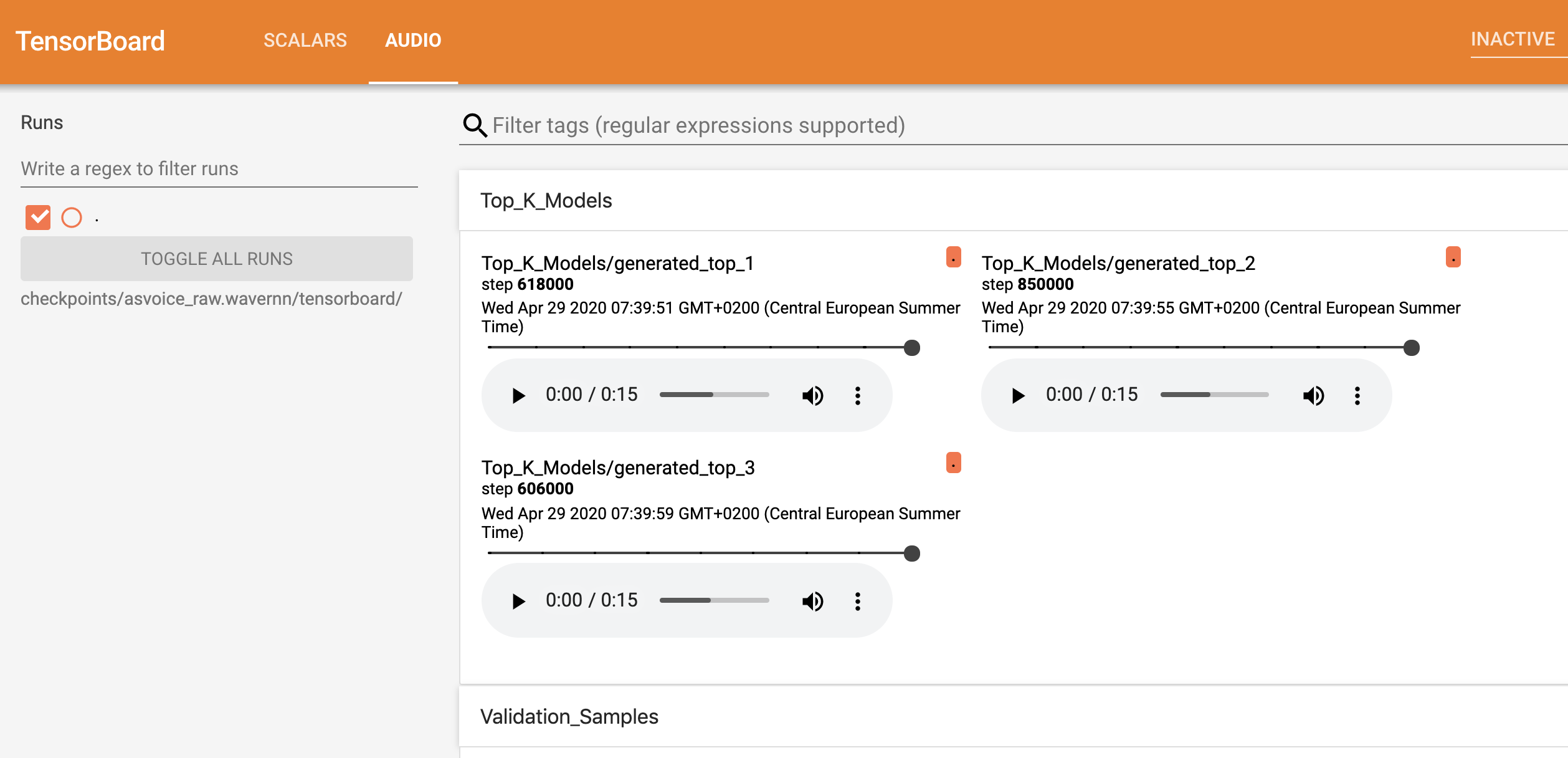Inspired by Microsoft's FastSpeech we modified Tacotron (Fork from fatchord's WaveRNN) to generate speech in a single forward pass using a duration predictor to align text and generated mel spectrograms. Hence, we call the model ForwardTacotron (see Figure 1).
Figure 1: Model Architecture.
The model has following advantages:
- Robustness: No repeats and failed attention modes for challenging sentences.
- Speed: The generation of a mel spectogram takes about 0.04s on a GeForce RTX 2080.
- Controllability: It is possible to control the speed of the generated utterance.
- Efficiency: In contrast to FastSpeech and Tacotron, the model of ForwardTacotron does not use any attention. Hence, the required memory grows linearly with text size, which makes it possible to synthesize large articles at once.
Model is now compatible with the MelGAN vocoder for faster-than-realtime synthesis on CPU. Check out the Colab Notebook where you can synthesize text using a pretrained MelGAN or WaveRNN model trained on LJSpeech.
The samples are generated with a model trained on LJSpeech. You can try it out with the following notebook:
Make sure you have:
- Python >= 3.6
Install espeak as phonemizer backend (for macOS use brew):
sudo apt-get install espeak
Then install the rest with pip:
pip install -r requirements.txt
(1) Download and preprocess the LJSpeech dataset:
python preprocess.py --path /path/to/ljspeech
(2) Train Tacotron with:
python train_tacotron.py
(3) Use the trained tacotron model to create alignment features with:
python train_tacotron.py --force_align
(4) Train ForwardTacotron with:
python train_forward.py
(5) Generate Sentences with Griffin-Lim vocoder:
python gen_forward.py --alpha 1 --input_text 'this is whatever you want it to be' griffinlim
If you want to use the MelGAN vocoder, you can produce .mel files with:
python gen_forward.py --input_text 'this is whatever you want it to be' melgan
To vocode the resulting .mel files use the inference.py script from the MelGAN repo and point to the model output folder (see inference example at MelGAN)
As in the original repo you can also use a trained WaveRNN vocoder:
python gen_forward.py --input_text 'this is whatever you want it to be' wavernn
For training the model on your own dataset just bring it to the LJSpeech-like format:
|- dataset_folder/
| |- metadata.csv
| |- wav/
| |- file1.wav
| |- ...
For languages other than English, change the language and cleaners params in the hparams.py, e.g. for French:
language = 'fr'
tts_cleaner_name = 'basic_cleaners'
You can monitor the training processes for Tacotron and ForwardTacotron with
tensorboard --logdir checkpoints
Here is what the ForwardTacotron tensorboard looks like:
Figure 2: Tensorboard example for training a ForwardTacotron model.
You can synthesize text using the pretrained models with
python gen_forward.py --input_text 'Hi there!' --hp_file pretrained/pretrained_hparams.py --tts_weights pretrained/forward_400K.pyt wavernn --voc_weights pretrained/wave_575K.pyt
- From experience I recommend starting with the standard params (RAW mode with 9 bit), which should start to sound good after about 300k steps.
- Sound quality of the models varies quite a bit, so it is important to cherry-pick the best one.
- For cherry-picking it is useful to listen to the validation sound samples in tensorboard. The sound quality of the samples is measured by an additional metric (L1 distance of mel specs).
- The top k models according to the above metric are constantly monitored and checkpointed under path/to/checkpoint/top_k_models.
Here is what the WaveRNN tensorboard looks like:
Figure 3: Tensorboard example for training a WaveRNN model.
- https://github.com/keithito/tacotron
- https://github.com/fatchord/WaveRNN
- https://github.com/seungwonpark/melgan
- https://github.com/xcmyz/LightSpeech
- Christian Schäfer, github: cschaefer26
See LICENSE for details.


